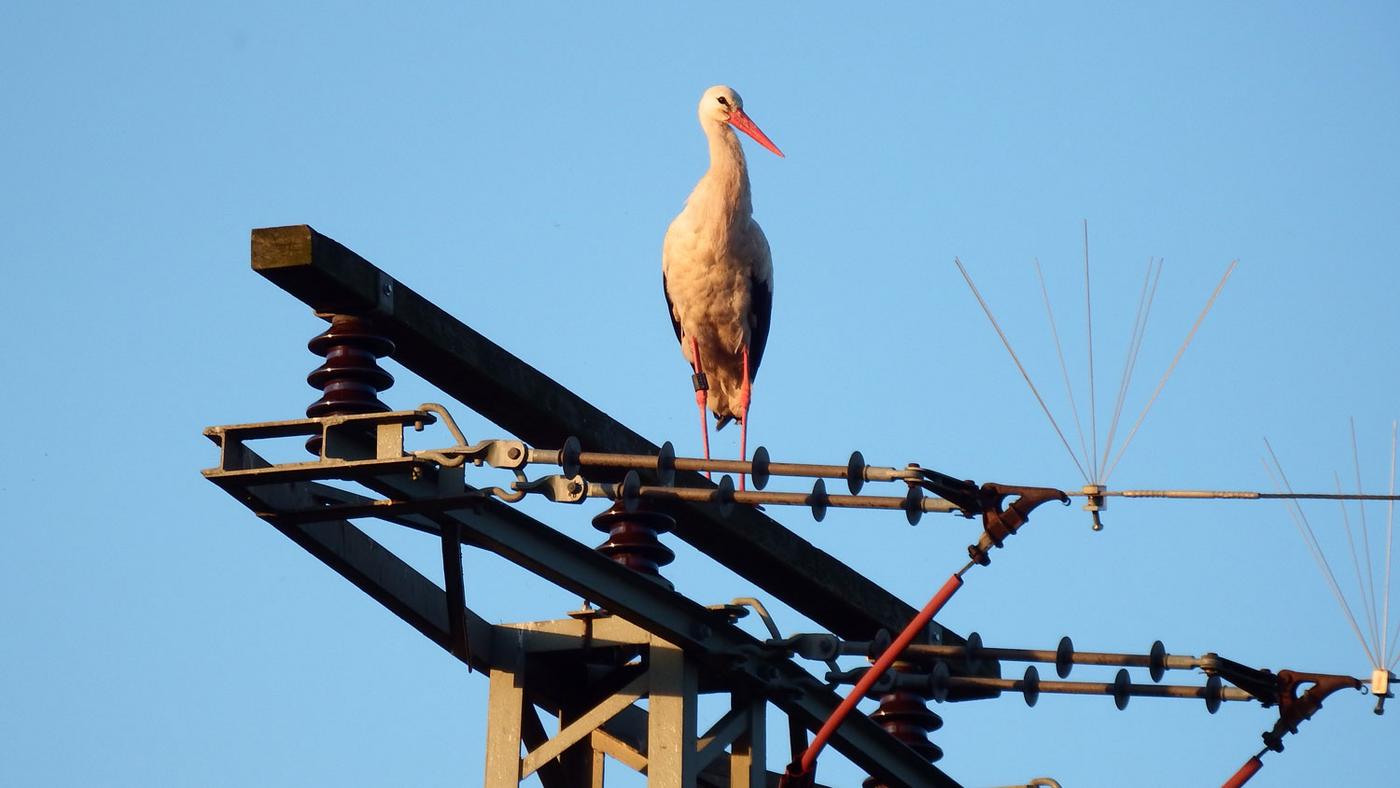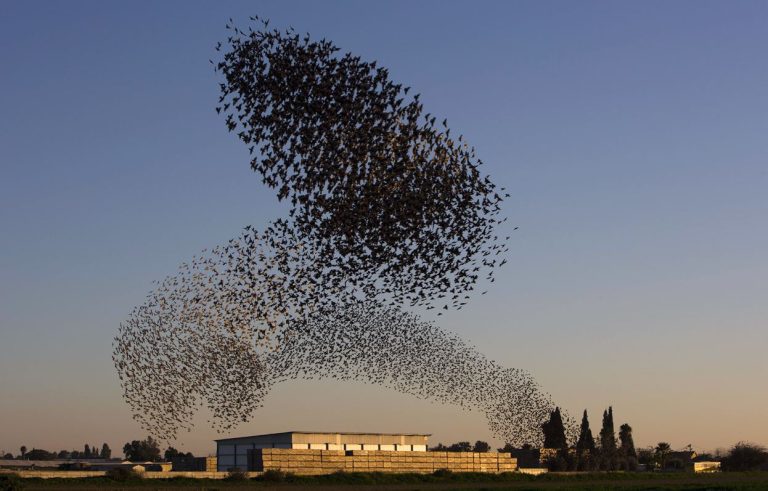Why Can Birds Stand on Power Lines? The Science Behind a Common Mystery
Introduction: A Perch Above Danger
If you’ve ever looked up at a telephone pole or power line on a warm afternoon, you’ve probably seen it: a row of birds, calmly perched, side by side, seemingly oblivious to the thousands of volts coursing just beneath their tiny feet. And like many curious minds, you might have wondered—why can birds stand on power lines and not get electrocuted?
It’s a question I’ve been asked countless times over the past 13 years in birdwatching field walks and school talks. And I understand the confusion. After all, electricity is deadly. So why are birds unharmed while perching on high-voltage lines?
Let’s unravel this phenomenon together, using science, observation, and a touch of awe at how nature and physics intersect.
1. The Short Answer: It’s All About Electrical Potential
To understand why birds don’t get electrocuted on power lines, we need to start with a basic concept in physics: electrical potential difference.
Electricity flows along a wire when there is a difference in voltage (or electrical potential) between two points. For example:
- If you touch a live wire and the ground at the same time, electricity can flow through your body (because you are now the path between two potentials).
- But if you touch only the live wire and nothing else, you’re at the same potential as the wire, and no current flows through you.
As explained by the U.S. Department of Energy: “Electric current flows through conductors when there’s a voltage difference. Birds on a single wire don’t complete a circuit, so current doesn’t flow through their bodies.”
In simple terms: a bird on one wire is safe because it’s not forming a complete circuit.
2. Why Humans (and Squirrels) Get Electrocuted
Now, contrast this with what happens when a human—or a squirrel—gets shocked by power lines.
- If a person touches a power line and a grounded object (like a ladder or pole), the electricity flows through them to reach the ground.
- If a squirrel touches two wires at different voltages (common in power transformers), it may be electrocuted because the voltage difference forces current through its body.
Birds are safe only if they touch one wire at a time. The moment they bridge two wires or one wire and another grounded structure, they risk electrocution.
3. How Birds Land Without Dying
I’ve watched thousands of birds—pigeons, starlings, sparrows, even crows—land and take off from power lines. They’ve evolved excellent spatial awareness, balance, and perching skills. Their feet are uniquely structured to clamp around cylindrical objects, which allows them to stay on thin lines even in wind or rain.
When they land:
- They touch only one wire with both feet.
- They avoid metal poles or grounded insulators nearby.
This behavior, while not conscious of electricity, has been reinforced by natural selection. Birds that accidentally made contact with multiple wires didn’t survive to pass on their genes.
“It’s not that birds understand electricity,” says Dr. Patricia L. Wright, biologist and animal behaviorist. “It’s that their anatomy and behavior reduce the likelihood of accidental electrocution.”
4. Do All Birds Survive on Power Lines? Sadly, No.
While most perching birds avoid harm, power lines do pose risks—especially to larger birds.
Common dangers include:
- Wingspan contact: Larger birds like eagles or herons may inadvertently touch two lines at once when taking off or landing.
- Collision: Birds flying into wires at high speed, especially during poor visibility, can suffer injury or death.
- Electrocution during nesting: Some raptors nest on power poles and can be electrocuted when bringing wet nesting materials or prey into contact with energized components.
According to the U.S. Fish and Wildlife Service, hundreds of thousands of birds are killed annually in North America due to electrocution or collision with power lines.
Utilities now use avian-safe designs like perch guards, diverters, and insulation covers to reduce bird deaths.
5. Birds as Indicators of Safe Energy Practices
Birds on power lines may seem like a minor curiosity, but they actually represent a key intersection between wildlife conservation and human infrastructure.
Some interesting facts:
- Power companies study bird behavior to design safer transmission systems.
- Certain bird species, like European starlings, are monitored for roosting behavior on electrical equipment.
- Tracking bird interactions with power grids helps inform environmental policy and wildlife protection laws.
So in a way, birds on wires are not just survivors—they’re sentinels of how well we’re balancing modern energy with natural ecosystems.
6. Cultural and Symbolic Interpretations
Beyond science, birds on power lines have become a metaphor in art, poetry, and pop culture.
- In photography, birds lined up on wires evoke ideas of harmony, patience, and stillness.
- In literature, the image often symbolizes a fragile balance—nature resting on the edge of human power.
- In music, they represent observers—witnesses perched above life’s noise.
It’s a simple sight, but one that invites contemplation: a moment where wildness meets civilization.
7. What Happens During Rain? Are Birds Still Safe?
Yes, birds can still perch safely on power lines during rain—but with some caveats.
Rain itself doesn’t increase electrocution risk as long as the bird is still only touching one wire. However, wet feathers and wings may:
- Increase the bird’s conductivity
- Make wing-span contact between wires more likely (especially when flapping or adjusting)
Most birds naturally hunker down during rain, keeping wings tucked and movement minimal. That, again, reduces risk.
As clarified by the National Renewable Energy Laboratory (NREL): “The key factor isn’t the weather—it’s whether the bird completes a circuit.”
8. Do Birds Feel Anything from the Electricity?
No, birds perched on a single wire do not feel the electricity. There’s no current flowing through them, so there’s no sensation.
However, birds that attempt to preen metal fittings, probe exposed conductors, or touch multiple voltage points can get zapped instantly. It’s rare—but real.
This is why some birds (particularly corvids, who are highly curious) may be at greater risk if electrical equipment is not bird-proofed.
9. So Why Don’t Birds Just Avoid Power Lines Altogether?
Birds perch on power lines because:
- They offer a high vantage point for spotting food or predators
- They’re often the tallest nearby structures
- They provide warmth, especially in cold weather (some wires emit heat)
From a bird’s perspective, a power line is just another safe perch—until it isn’t. They can’t “see” electricity. They rely on experience, instinct, and physiology to stay safe.
And as observers, we often assign marvel to this survival, even if it’s grounded in physics.
Summary Table: Why Birds Can Stand on Power Lines
| Factor | Explanation | Electrocution Risk? |
|---|---|---|
| Same Voltage Contact | Birds perch on one wire, touching only a single voltage point. | ❌ No |
| No Grounding Path | Birds don’t touch the ground or another object with different voltage. | ❌ No |
| Small Body Size | Their bodies don’t span across two wires. | ❌ No |
| Good Perching Balance | Their anatomy allows safe, single-point contact without bridging gaps. | ❌ No |
| Contact with Two Wires | If a bird touches two wires at once, current can pass through its body. | ✅ Yes |
| Large Wingspan Risks | Bigger birds like eagles or herons are more at risk of touching two wires. | ✅ Yes |
| Wet Conditions | Rain doesn’t electrocute birds unless they bridge different potentials with wet feathers. | ⚠️ Sometimes |
Final Thoughts: Perched Between Danger and Design
So—why can birds stand on power lines without dying?
Because they don’t complete a circuit. They perch safely on one energized wire, avoiding voltage differences that would otherwise create deadly current through their bodies.
But the story doesn’t stop at science. Birds on wires invite us to reflect on:
- The invisible forces that govern our world
- The adaptability of life amid human infrastructure
- Our responsibility to ensure that our energy systems are as safe for wildlife as they are for us
Every time I see a row of swallows resting peacefully above the rush of modern life, I’m reminded: nature adapts—but we have a duty to meet it halfway.
FAQs
❓Why don’t birds get electrocuted on power lines?
Birds are safe on power lines because they perch on just one wire at a time, which means there’s no voltage difference across their bodies—so electricity doesn’t flow through them.
❓Would a bird be electrocuted if it touched two wires?
Yes. If a bird touches two wires with different voltage levels—or a wire and a grounded structure—electricity can flow through its body, causing electrocution.
❓Can birds sit on power lines during rain?
Yes, birds can perch during rain as long as they don’t touch two different voltages. Wet feathers may slightly increase risk if they flap or shift and create a bridge between wires.
❓Why do larger birds get electrocuted more often?
Larger birds like hawks, eagles, and herons have wide wingspans, increasing the chance of accidentally touching two wires at once, especially when taking off or landing.
❓Do birds feel anything when sitting on live wires?
No. Birds perched on a single wire feel nothing because no current flows through their bodies. They remain at the same electrical potential as the wire.
❓How do power companies protect birds?
Many utilities install perch guards, insulators, and diverters to prevent electrocution and collisions, especially near nesting sites or migration paths.
❓Is electricity visible to birds?
No. Birds cannot see or sense electricity itself. They avoid danger by instinct and behavior—not by understanding electrical risks.
Read also: Why Do Swans Kill Themselves? The Truth Behind a Heartbreaking Myth







